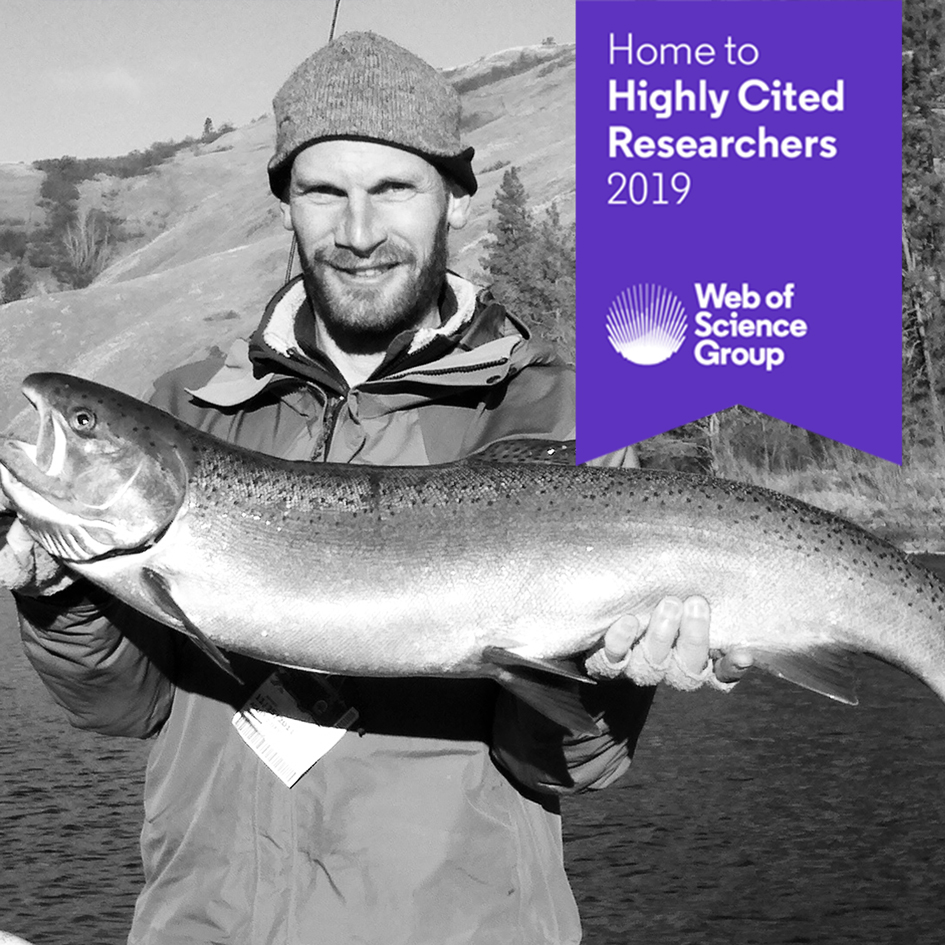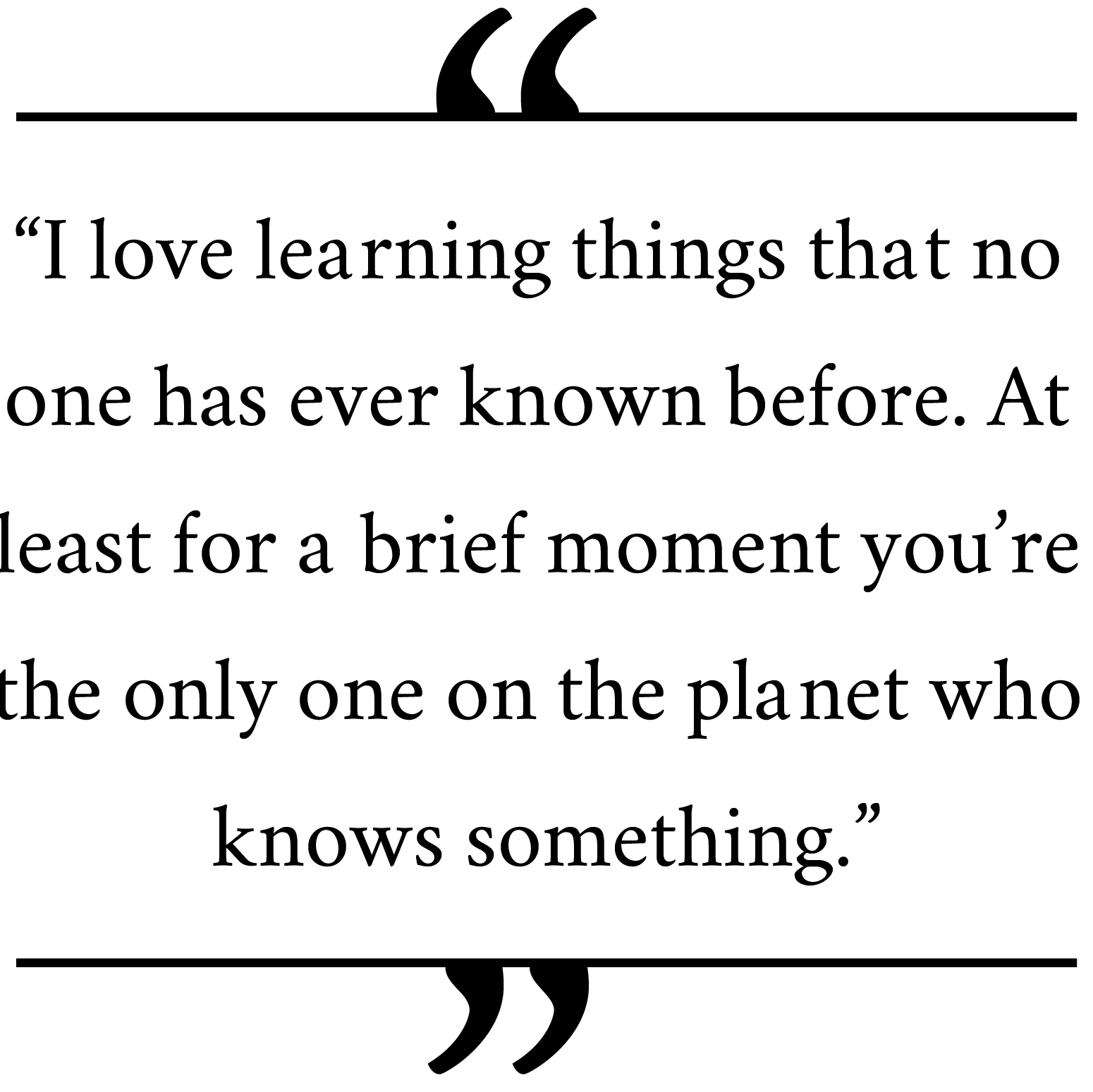2019 Highly Cited Researcher Series: Paul Hohenlohe
January 14, 2020
“As a little kid, I liked animals and nature, and I always wanted to be a biologistâ€, says Paul Hohenlohe, recalling his origins. Hohenlohe is an associate professor in the Biological Sciences Department, and one of four faculty from the University of Idaho recognized by Web of Science Group as a highly cited researcher in 2019.
Biology: From Evolution to Conservation
Hohenlohe earned his Bachelor’s degree in biology, and after finishing graduate school, he did work as a conservation biologist for the federal Northwest Forest Plan. However, he ultimately wanted to get back to the academic realm of research and teaching, so came to the University of Idaho—joining the IBEST community in the process—where he has been for the past eight years. Hohenlohe aptly describes himself as “with IBEST from the beginning†of his career with the University of Idaho, since his hiring was the result of an IBEST search, and initiated his now extensive connection with the institute. Currently, his research relies heavily on services from IBEST’s Computational and Genomics Resources Cores, including data analyzation from the CRC and a lab that utilizes the GRC.
Hohenlohe studies “evolutionary genetics and genomics with applications to conservation.†This consists of many conservation genomics projects, studying mainly mammals, birds, and fish, but also insects and plants. “Our research focuses on the genomic architecture of evolving populations, developing theory and tools to harness the power of modern DNA sequencing technology.â€
In Hohenlohe’s field of research, ecology and evolutionary biology, he studies the genetics of adaptation of populations to their environments. More and more, he finds that his time is spent on conservation-related projects. He describes his specialty as “using genomic tools to learn about endangered species and inform conservation actionsâ€, which is an important focus in today’s changing world. Hohenlohe’s work applies genomics to conservation and evolutionary biology, creating new uses for existing technology.
Keeping Up With Change
It was a surprise for Hohenlohe when he was notified of his status as a Highly Cited Researcher for 2019, since he doesn’t follow Web of Science Group or citations of his work very closely. Some of Hohenlohe’s more prominent projects—and his most frequently referenced—include the interconnected programs RADseq and Stacks. RADseq is a powerful genomic sequencing tool, and Stacks is a computer software package that is used for analyzing the data gathered through RADseq. Both of these innovative programs can be used to analyze any species without any prior knowledge of that species.
In his future studies, Hohenlohe plans to continue down the path he is on now. He and a number of collaborators are participating faculty in the ongoing EPSCoR GEM3 research project studying trout, sagebrush, and other associated wildlife species. Hohenlohe sees himself continuing to do genomics and conservation-related research as it becomes more and more relevant. In the ever-changing landscape of science, “techniques continue to improve and expand, so we try and keep up with things as they changeâ€.

Challenges and Rewards
Regarding obstacles in his line of work, Hohenlohe said “research is full of challenges; pretty much any research project has lots of setbacks and dead ends. A big part of research is banging your head against a wall until something works, but when it does work, you can see the progress and learn something newâ€.
Even with all the challenges of research, Hohenlohe enjoys the many rewarding elements in his profession. He appreciates working with students, watching them develop their skills and grow into independent scientists. And as a lifelong researcher, he loves the thrill of “learning things that no one has ever known before. At least for a brief moment you’re the only one on the planet who knows somethingâ€.
Citation Summary
Total Publications: 73
Total Times Cited: 12,858
Most-Cited Publication: Genome-wide genetic marker discovery and genotyping using next-generation sequencing (cited 1,889 times)
Article by Katy Riendeau
IBEST Design & Marketing Coordinator